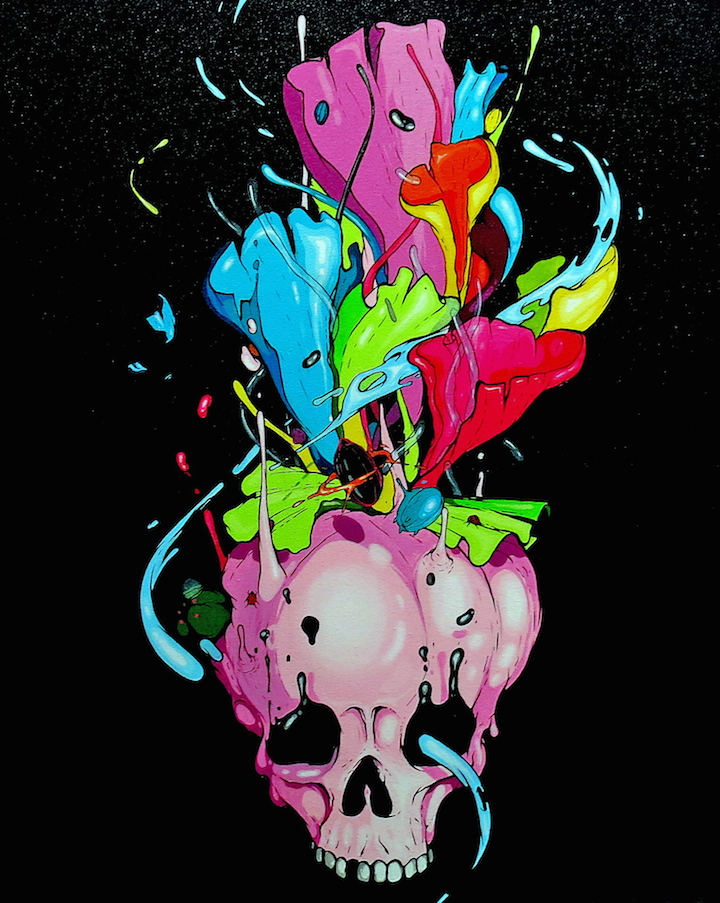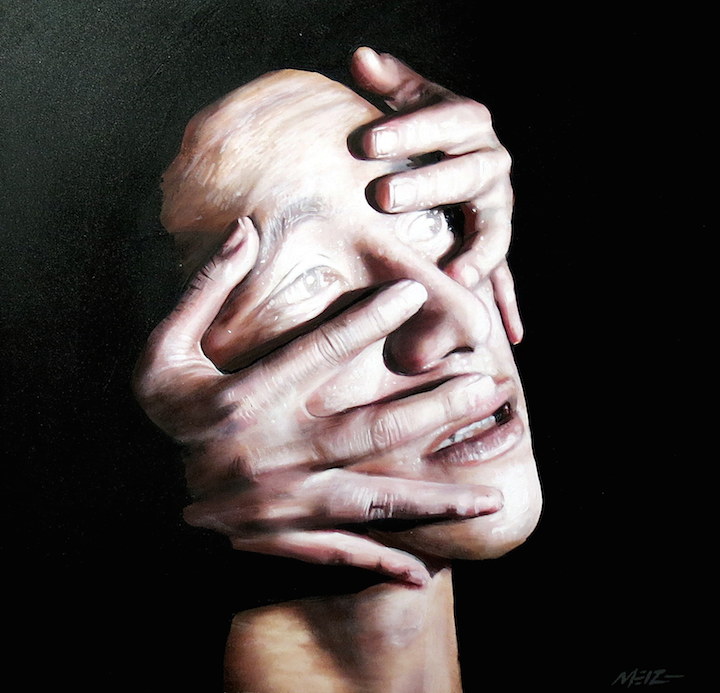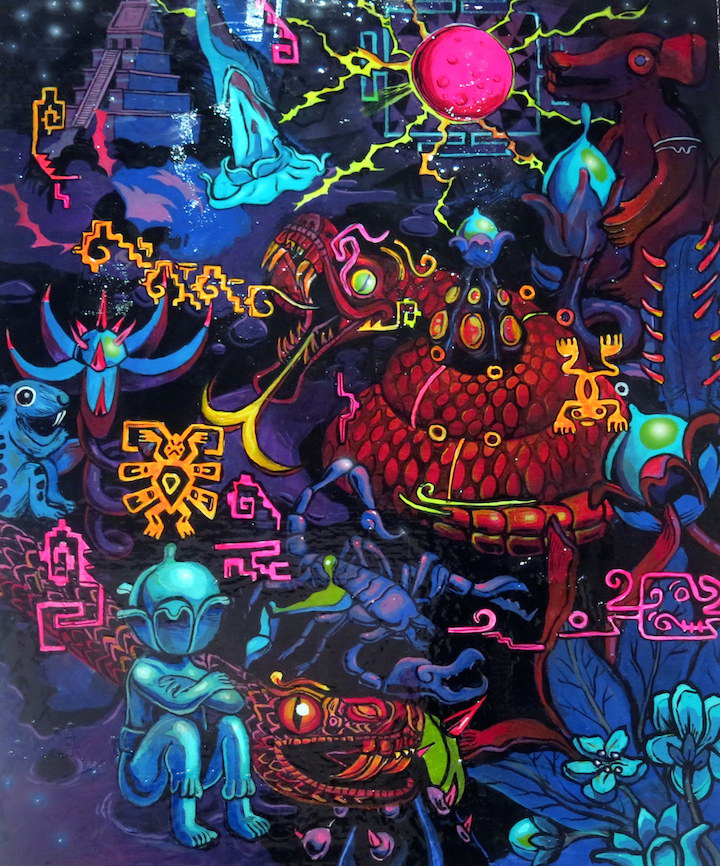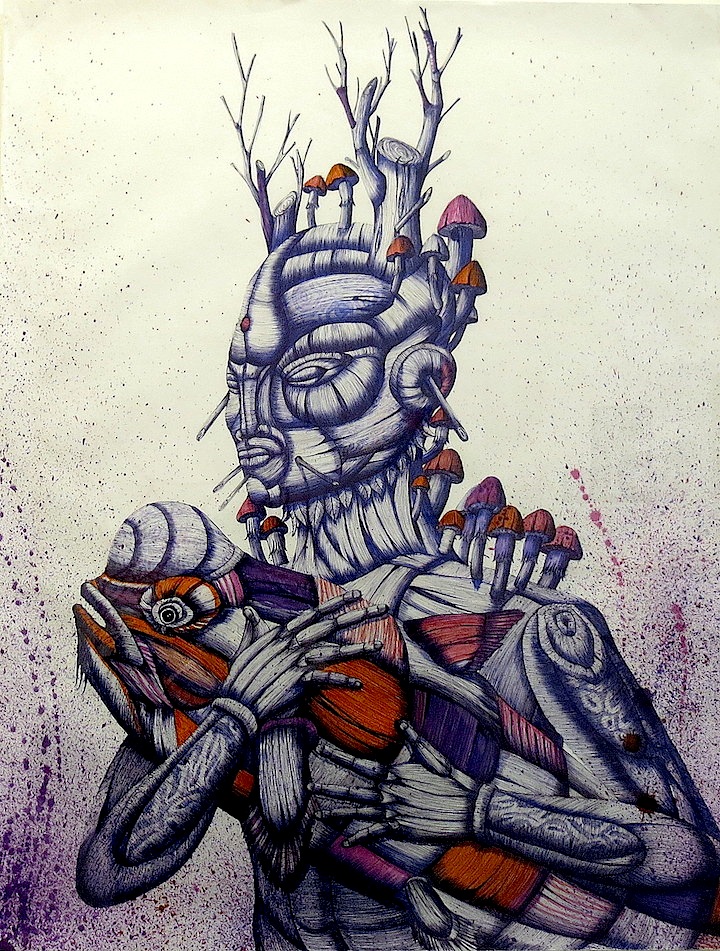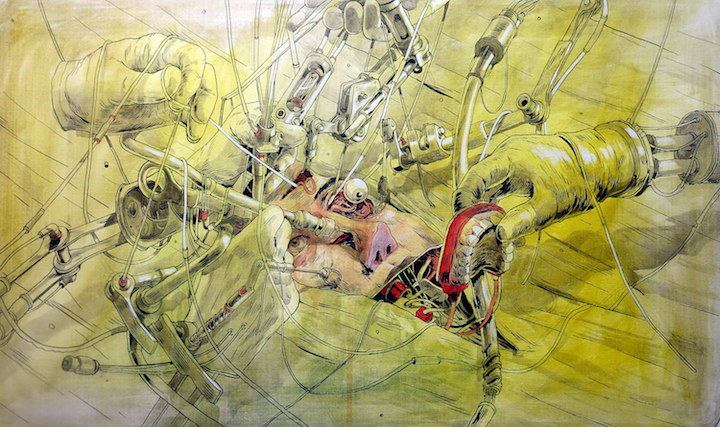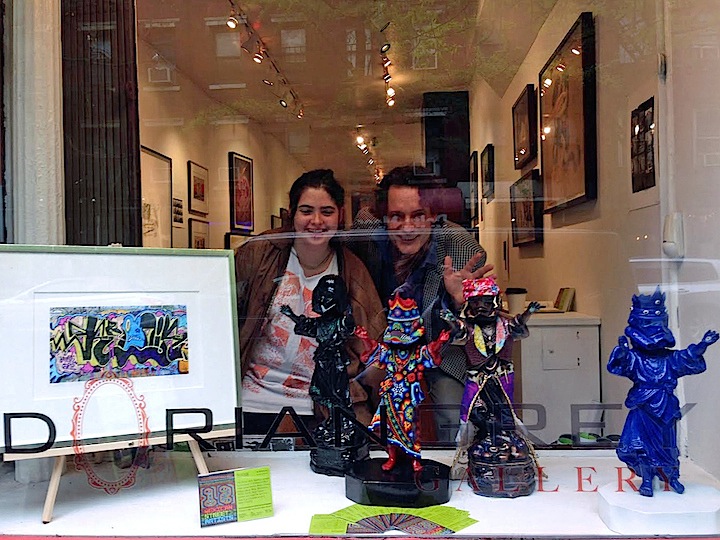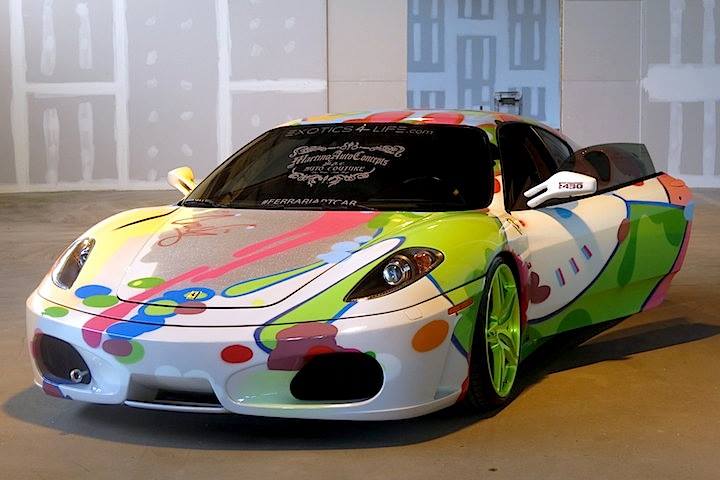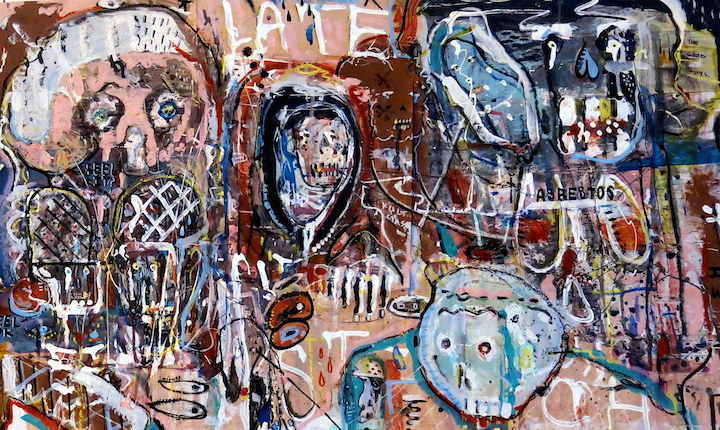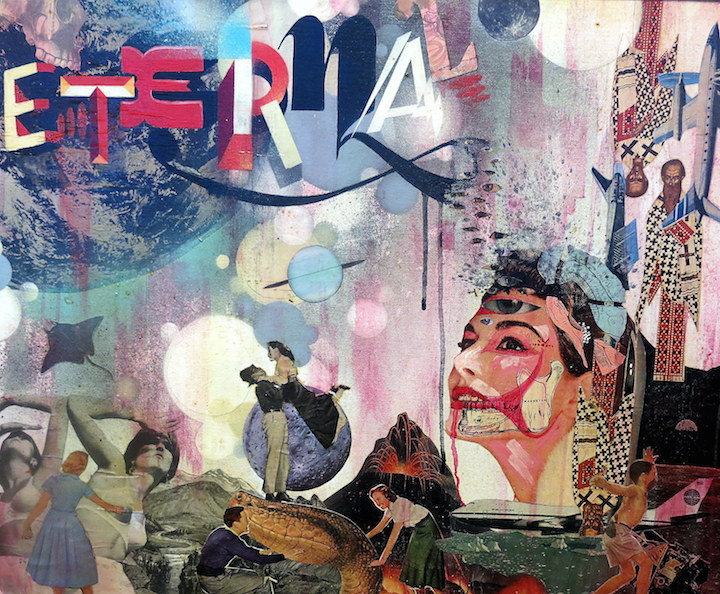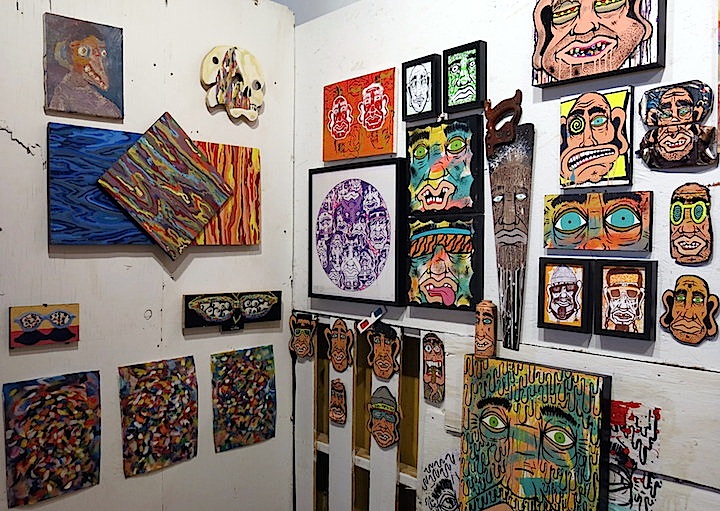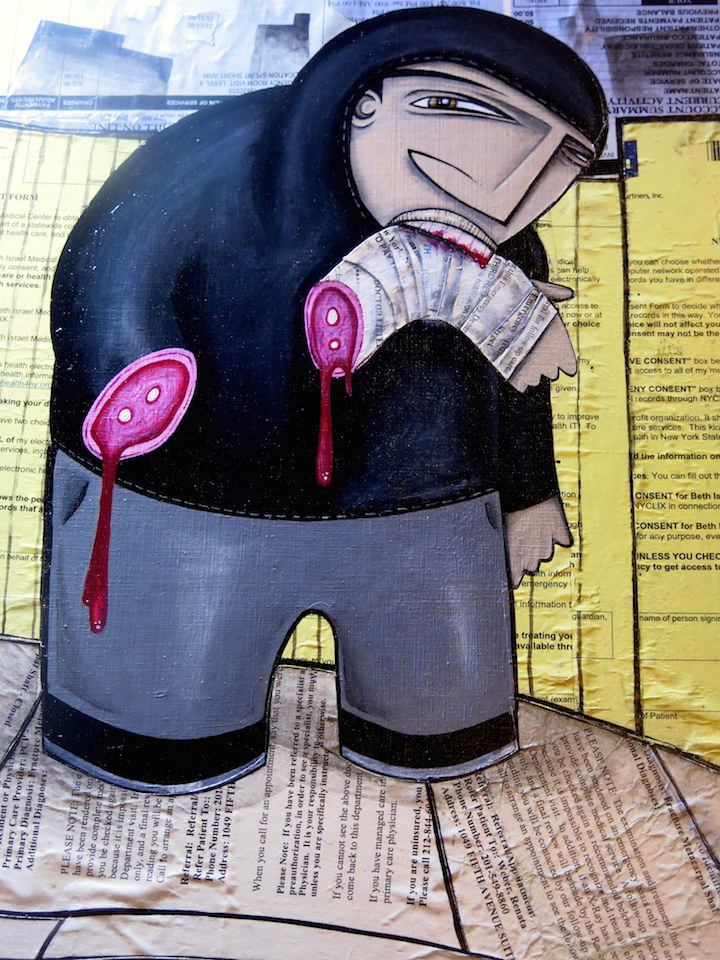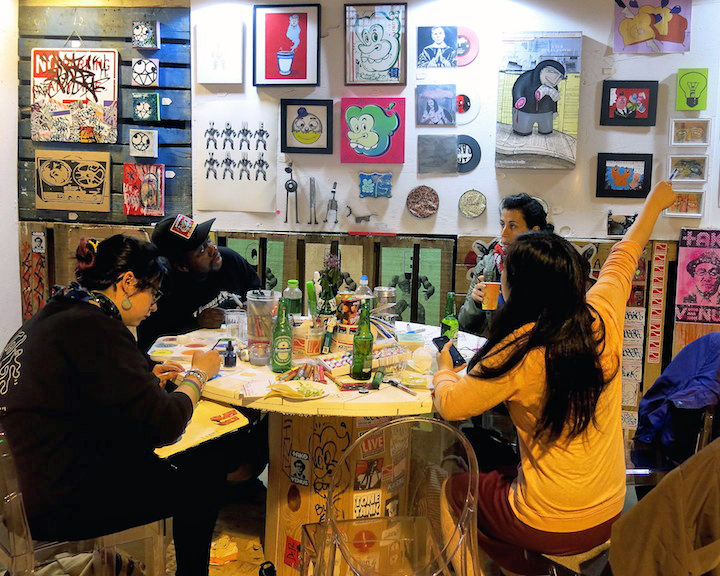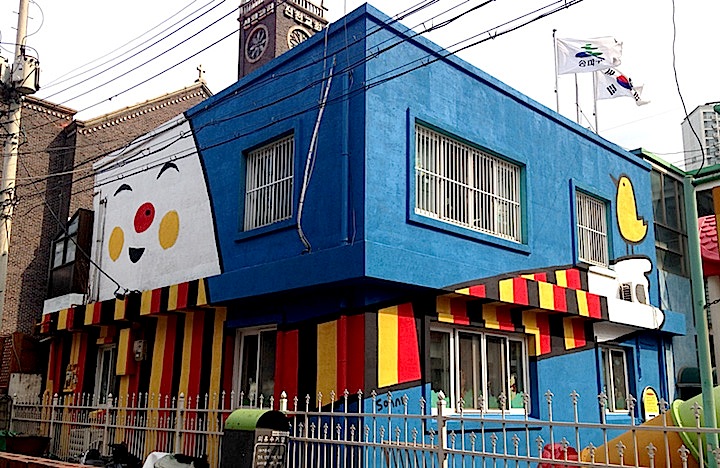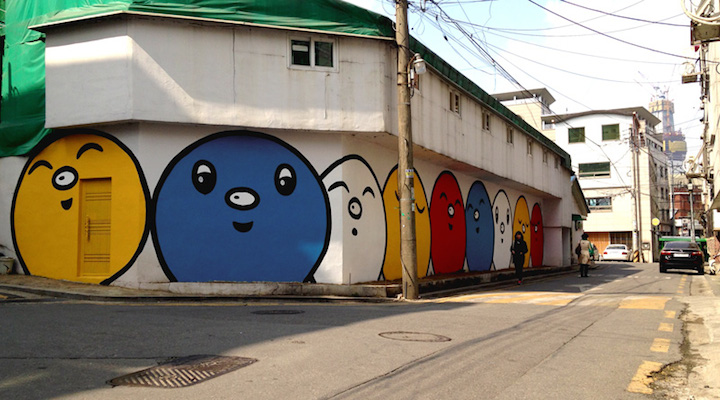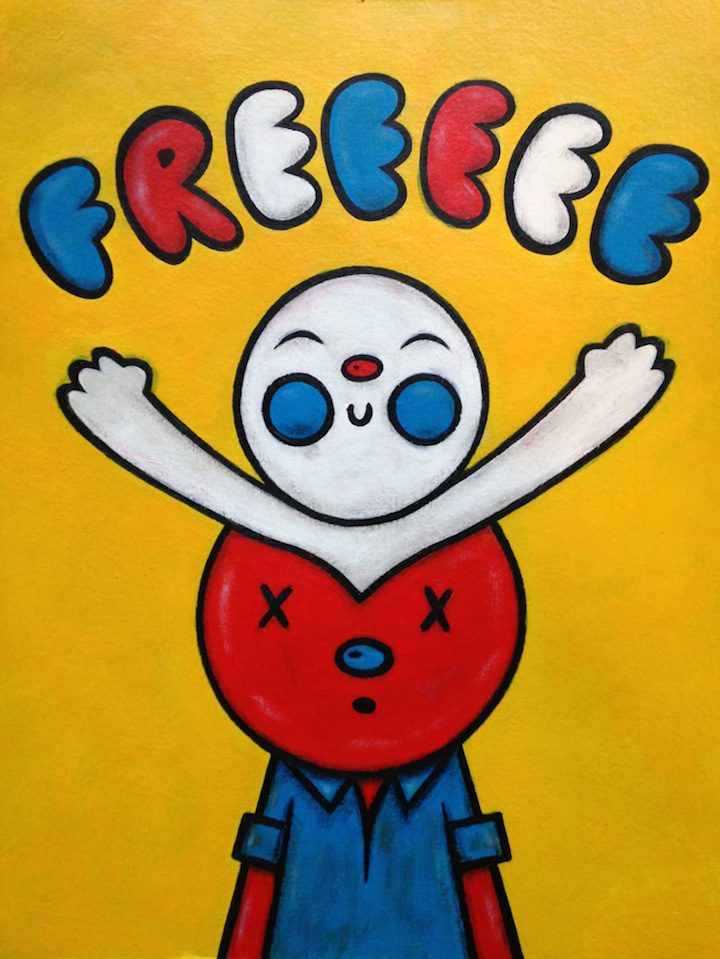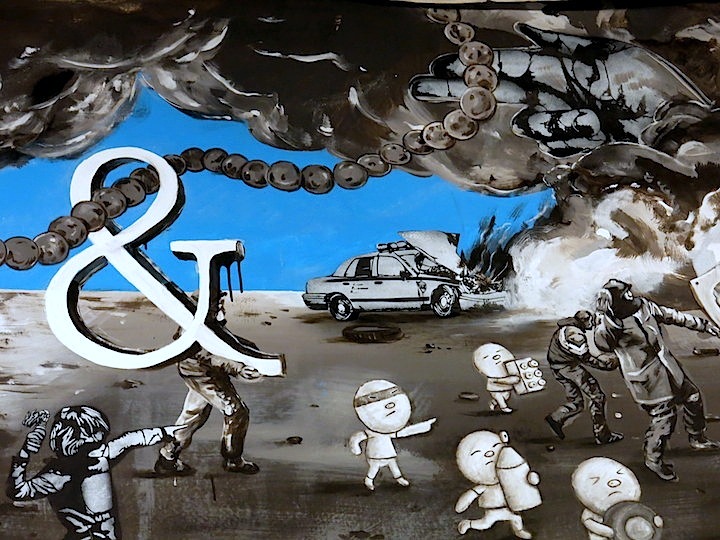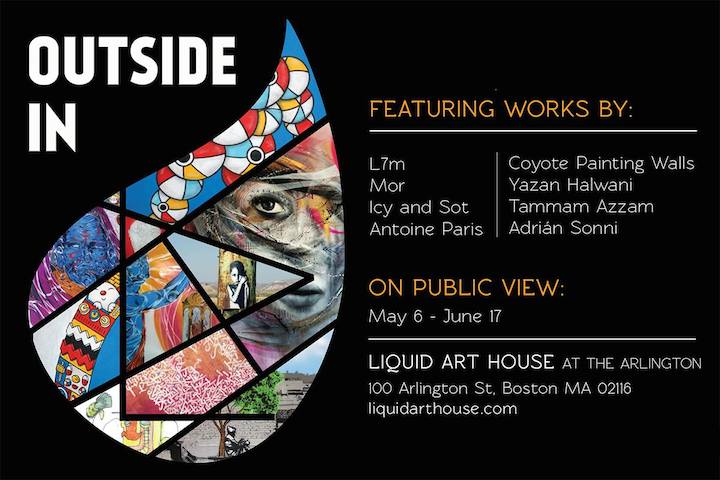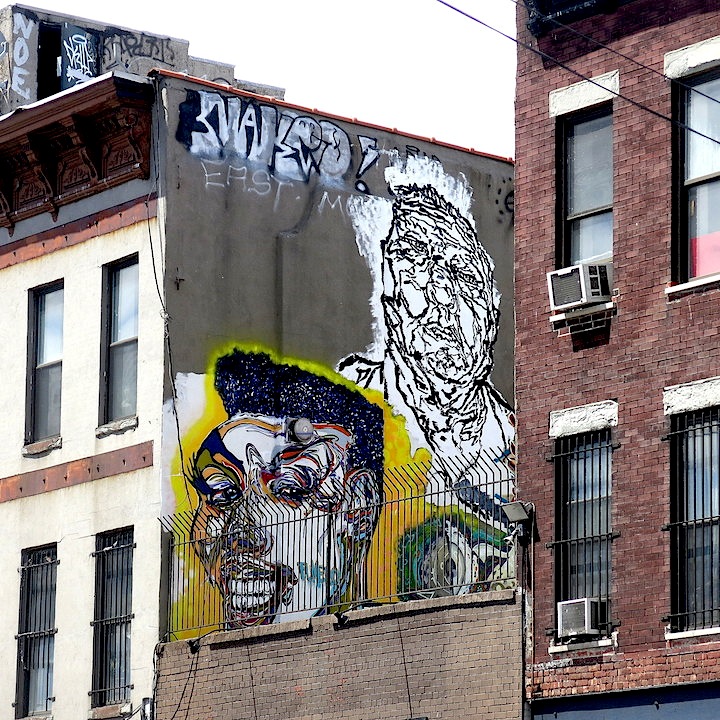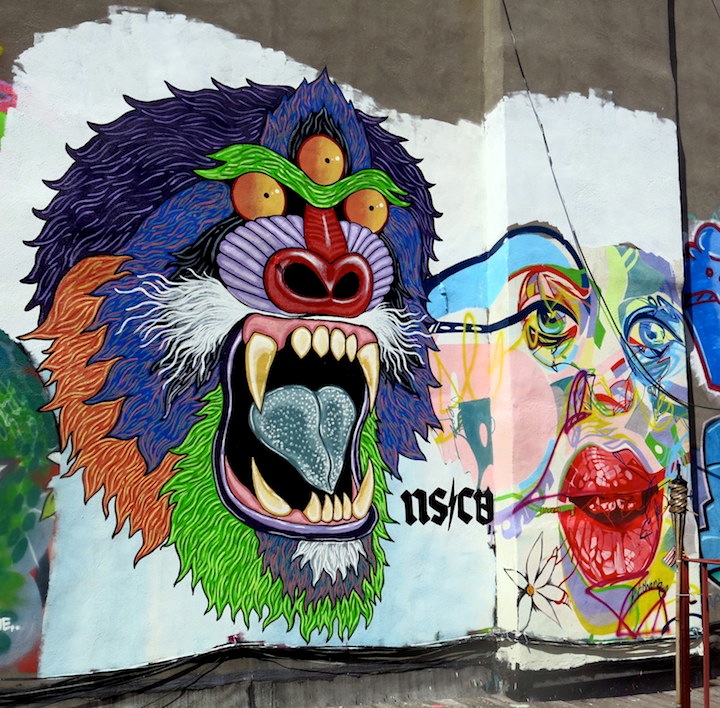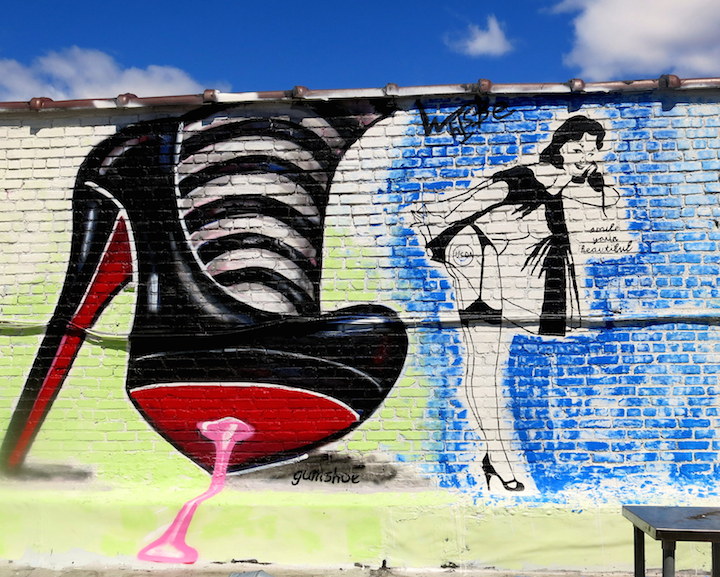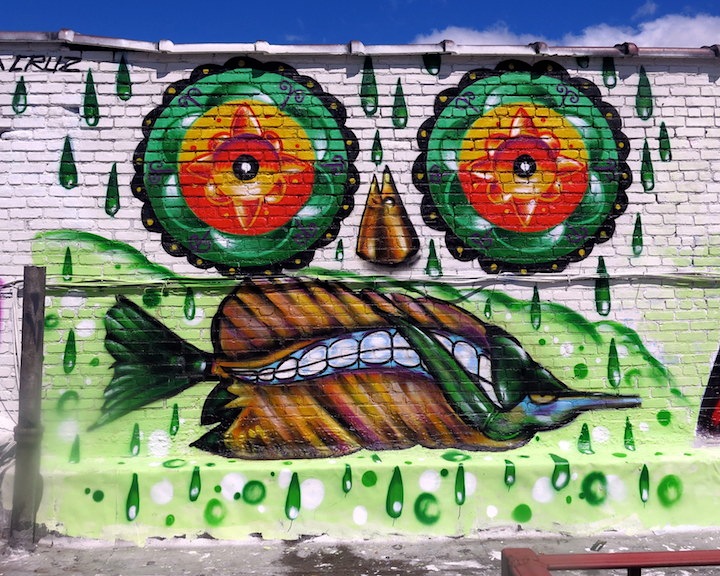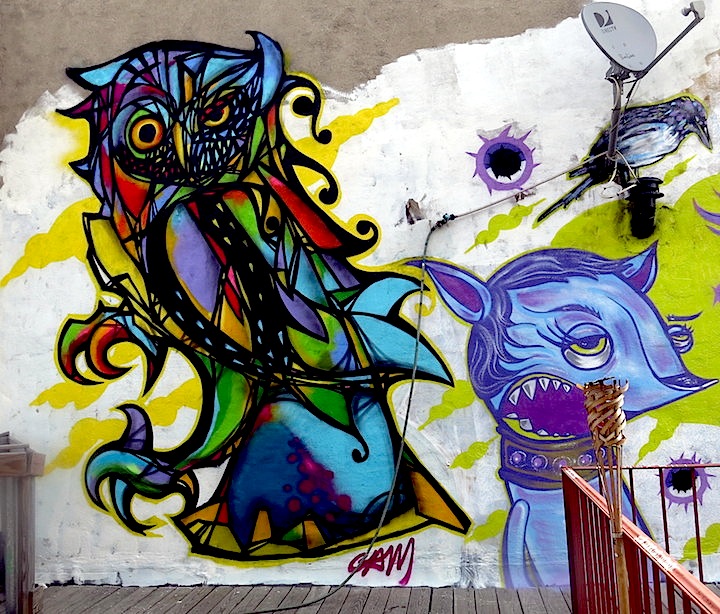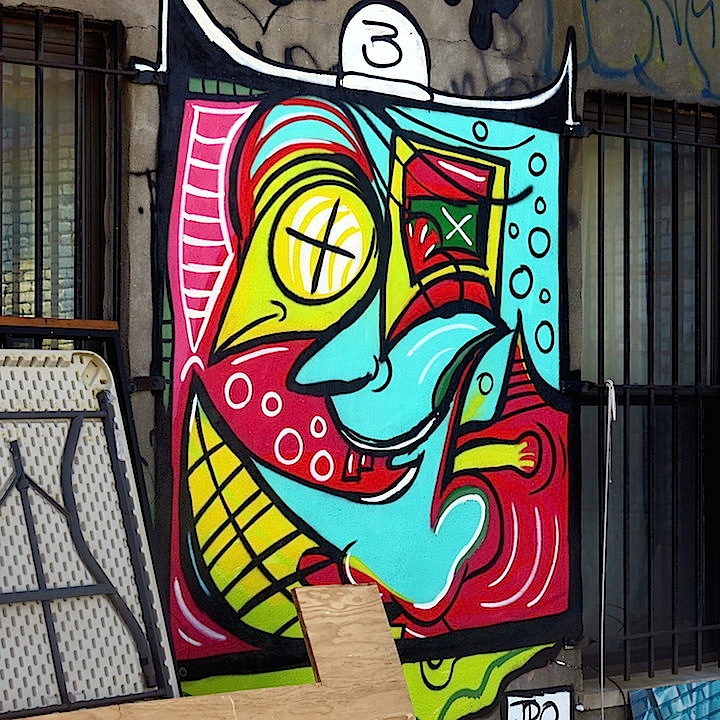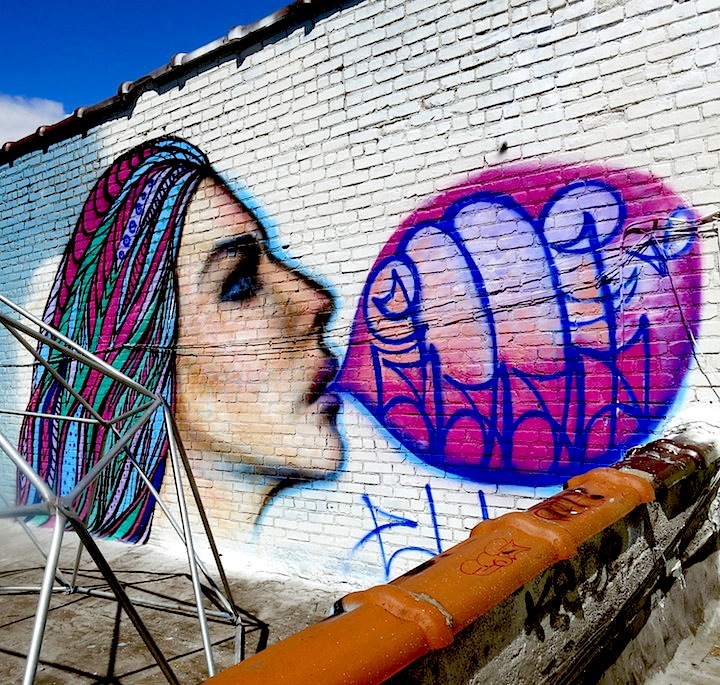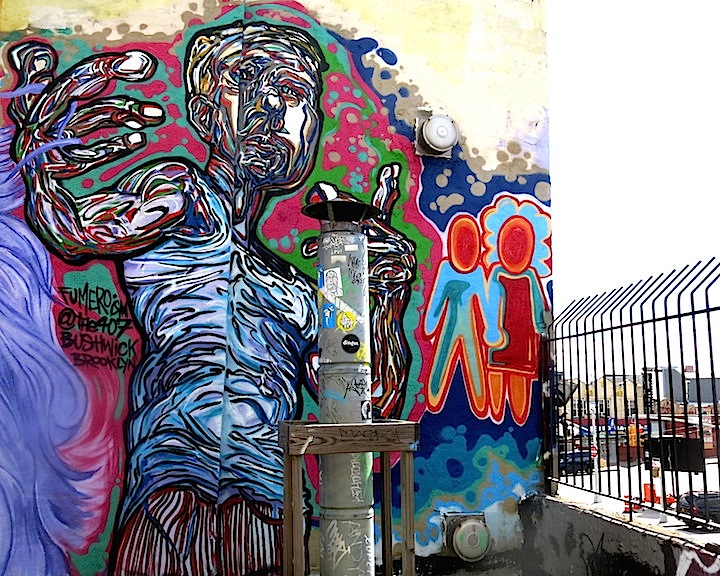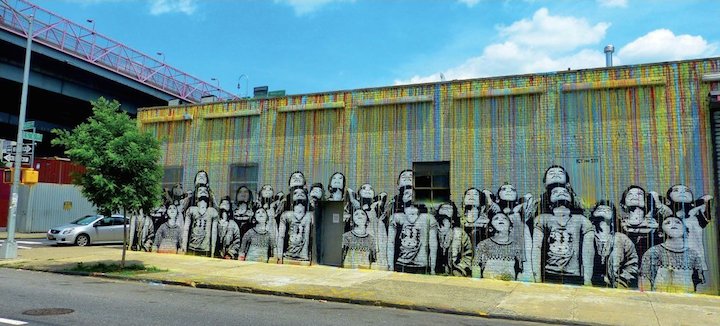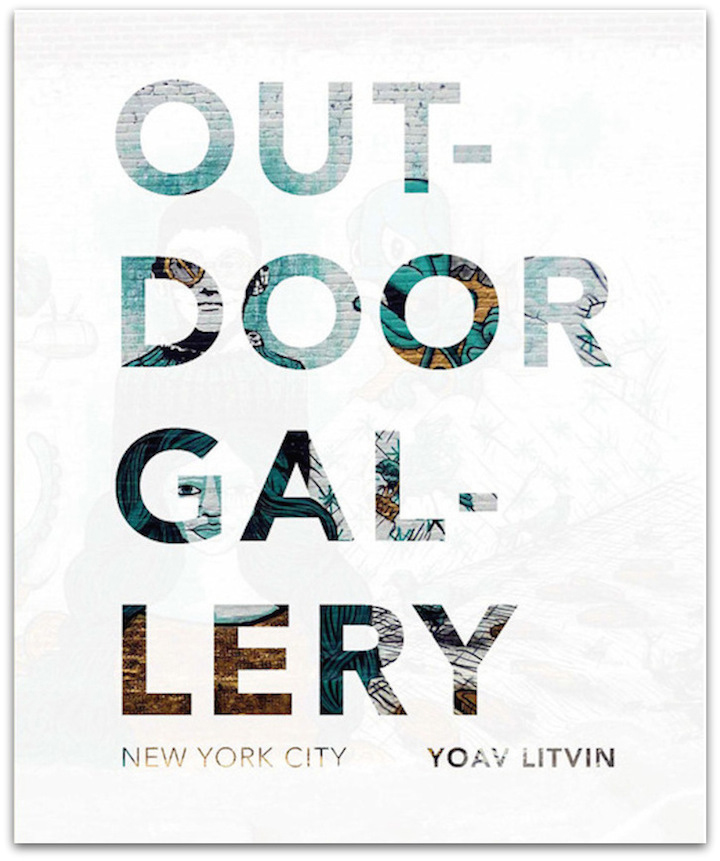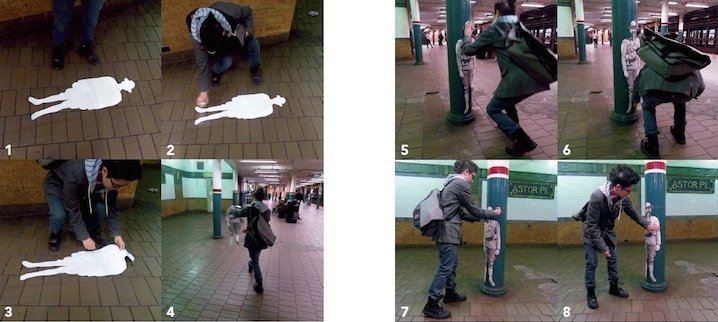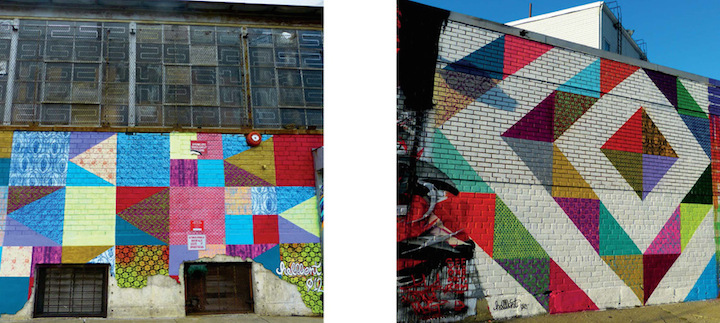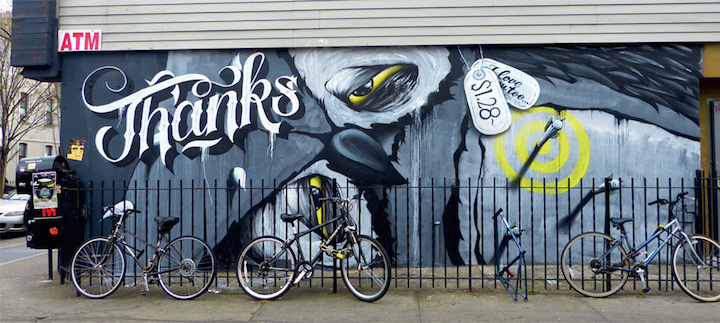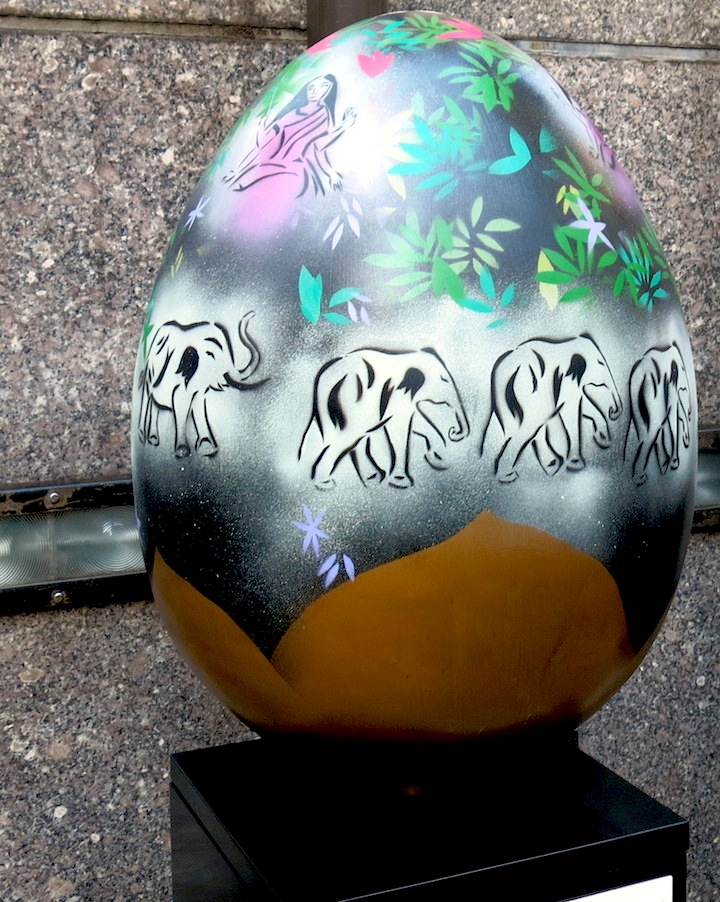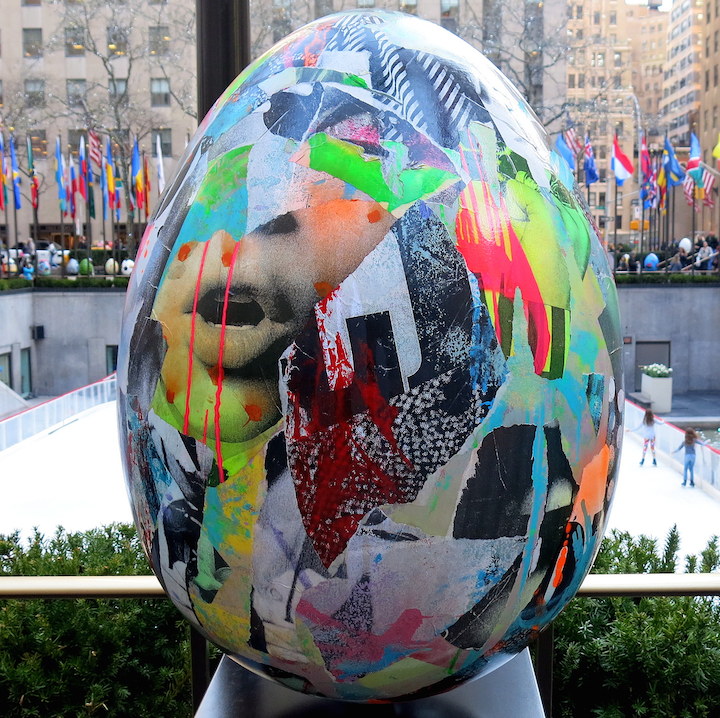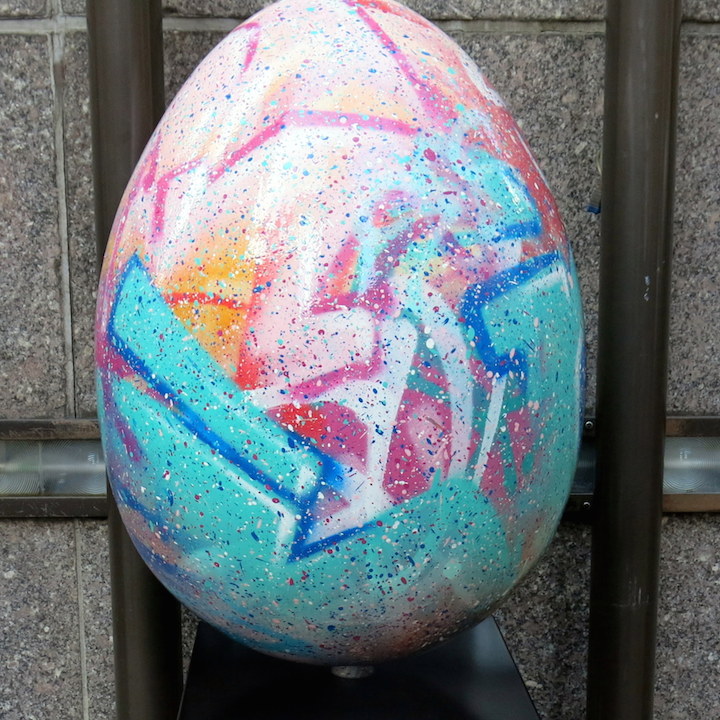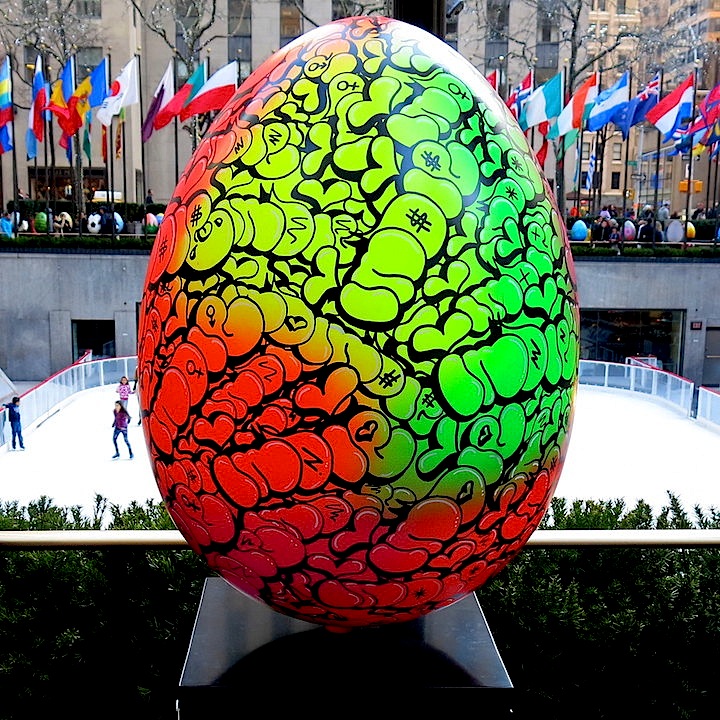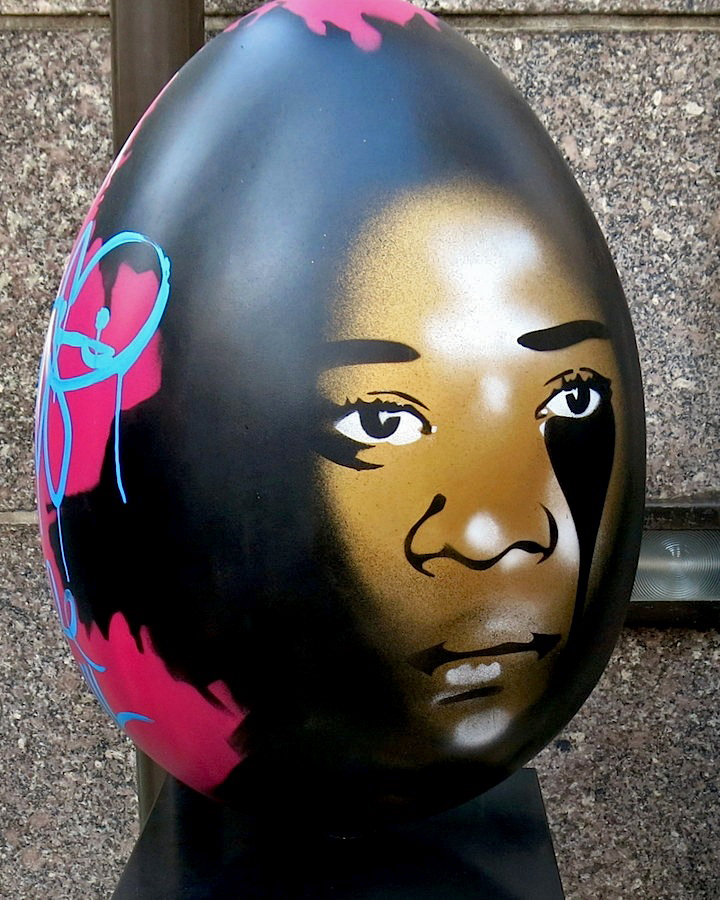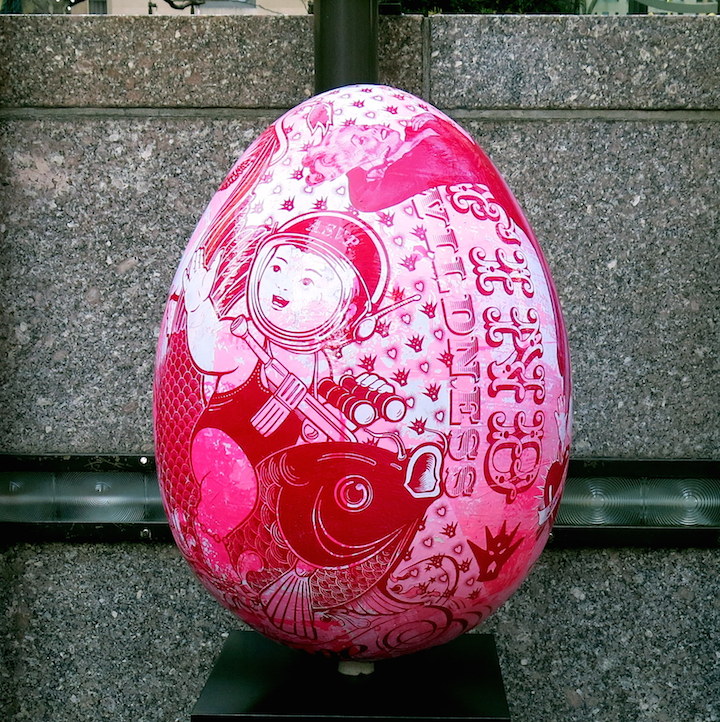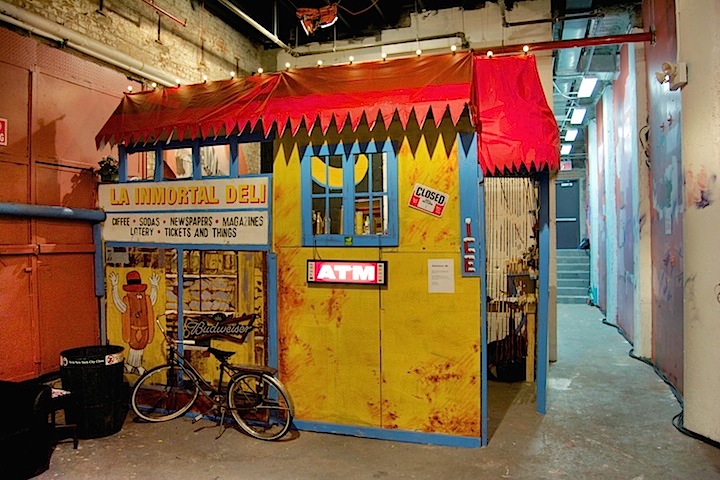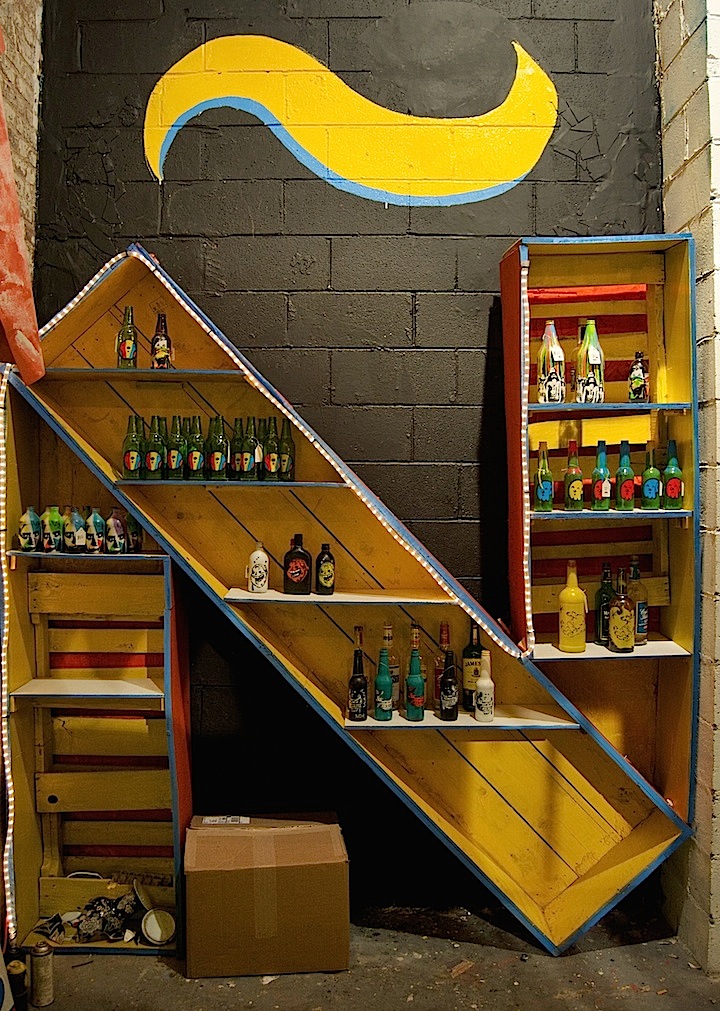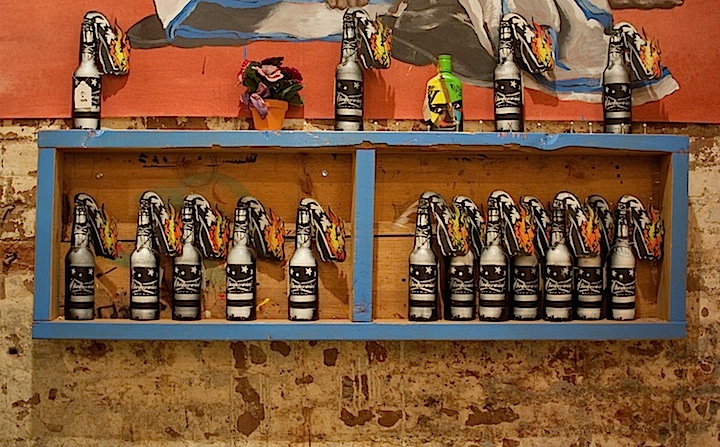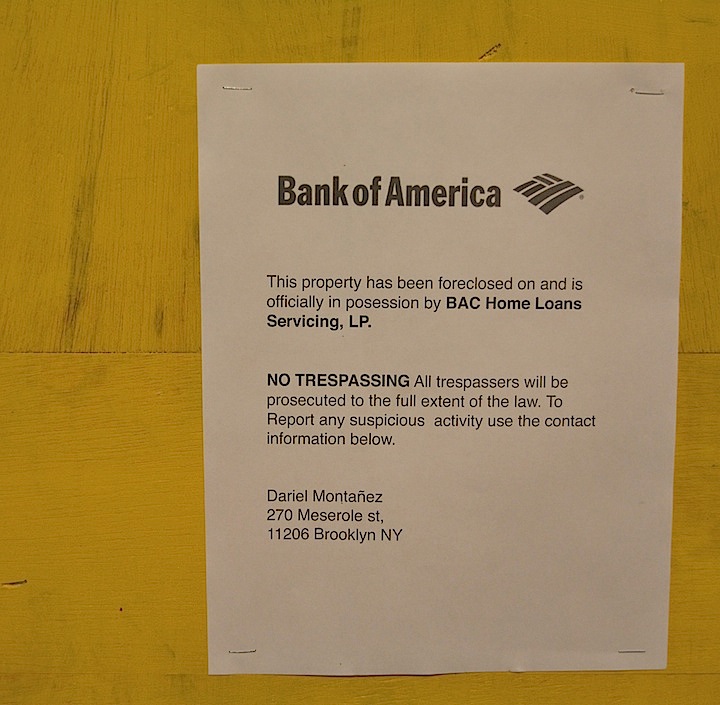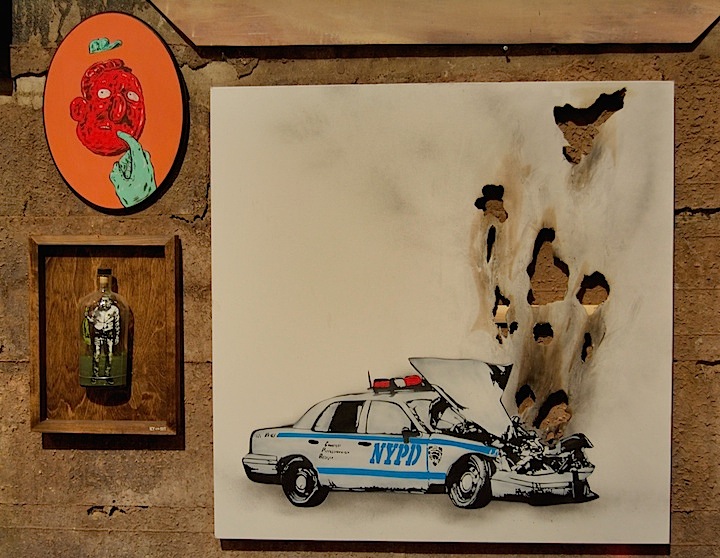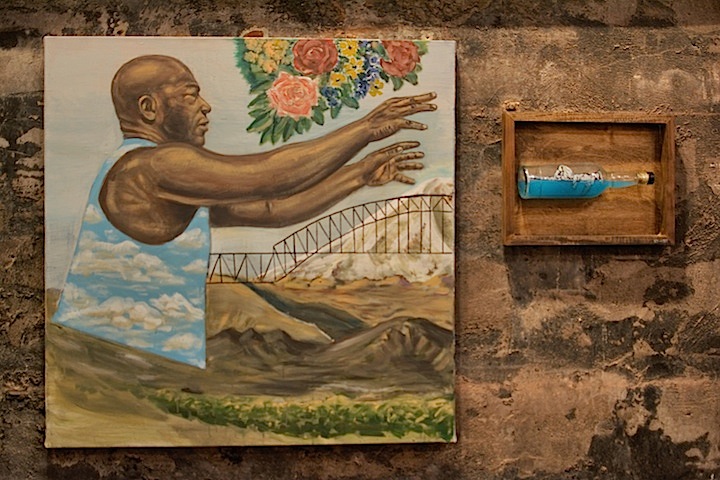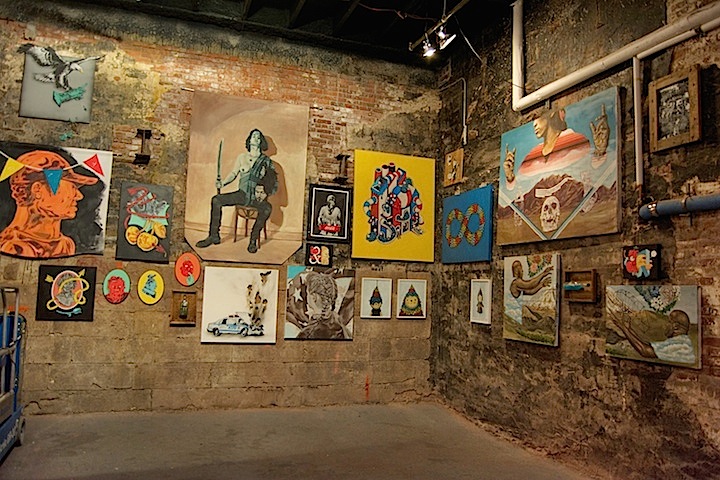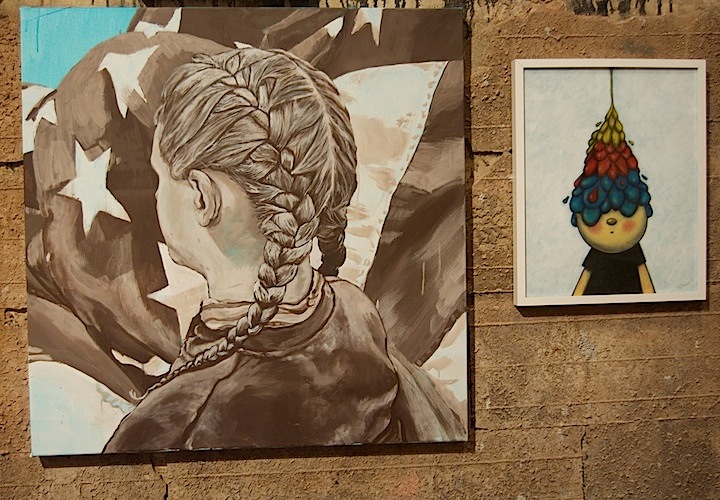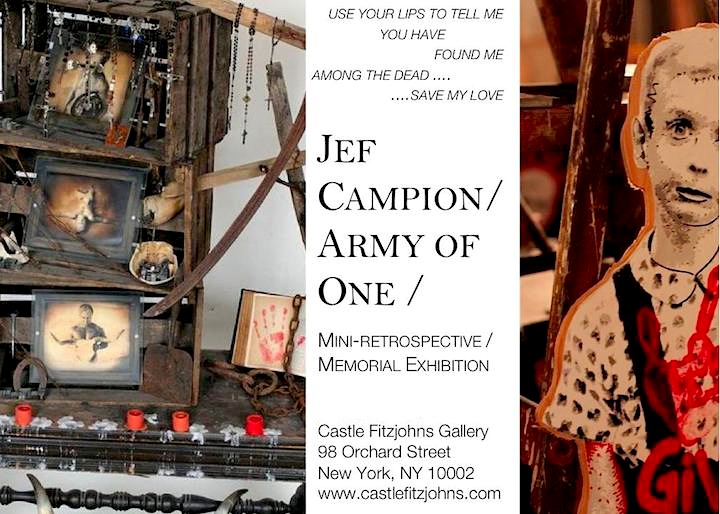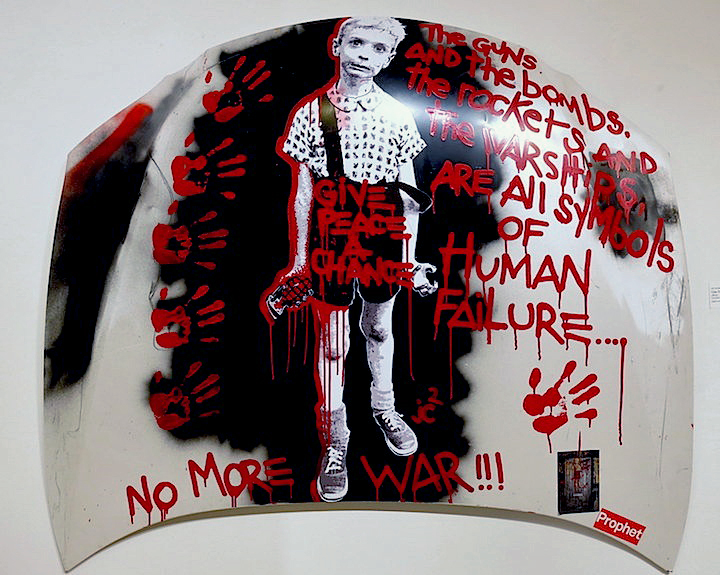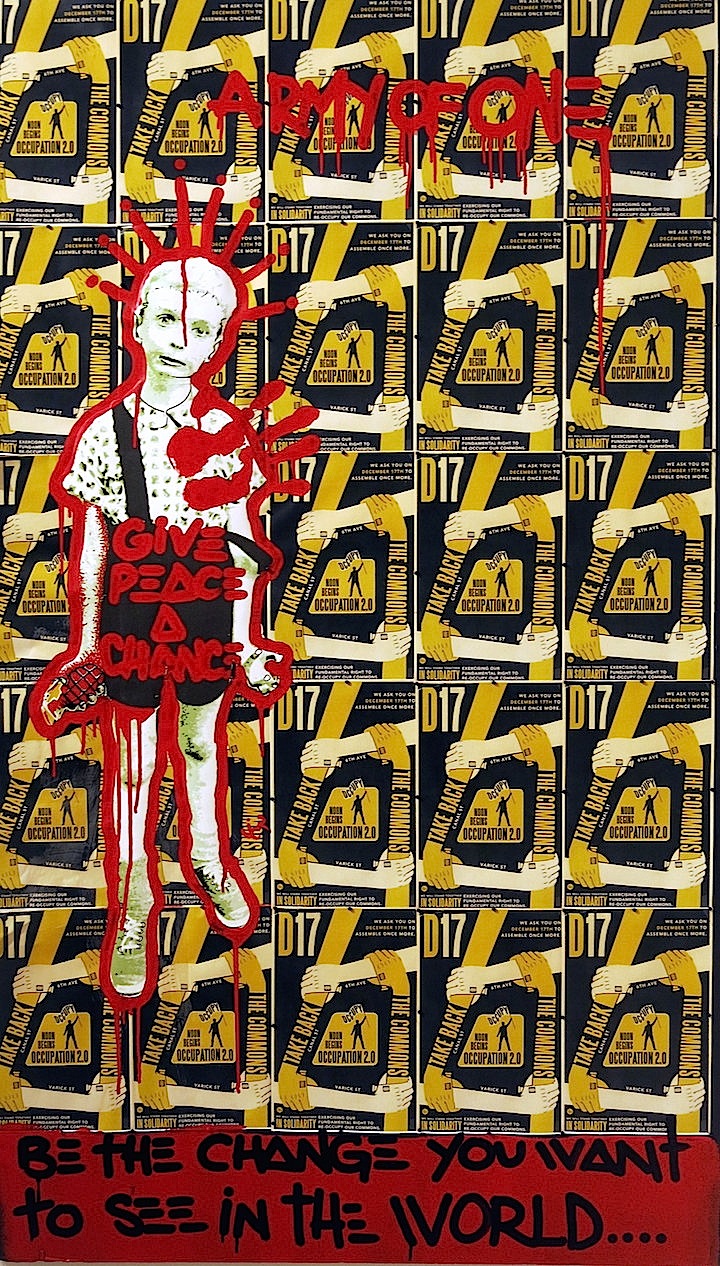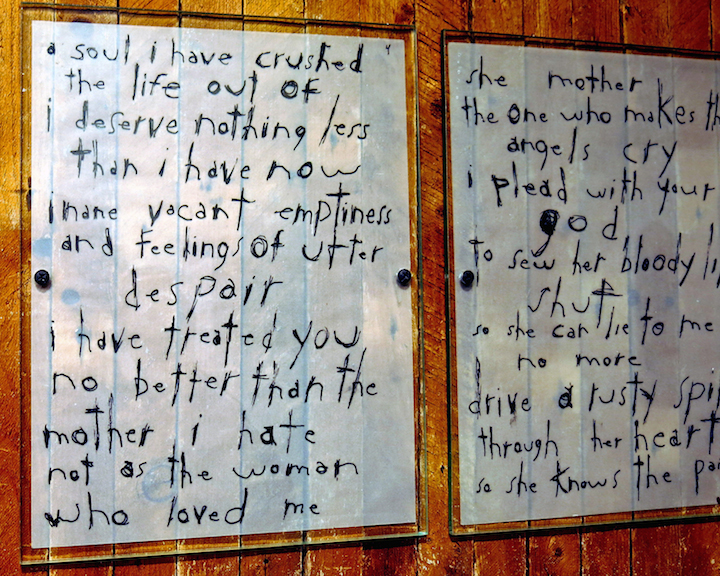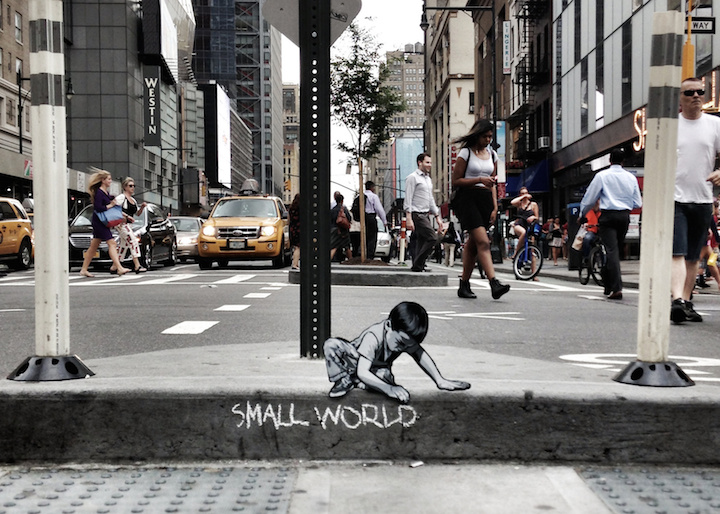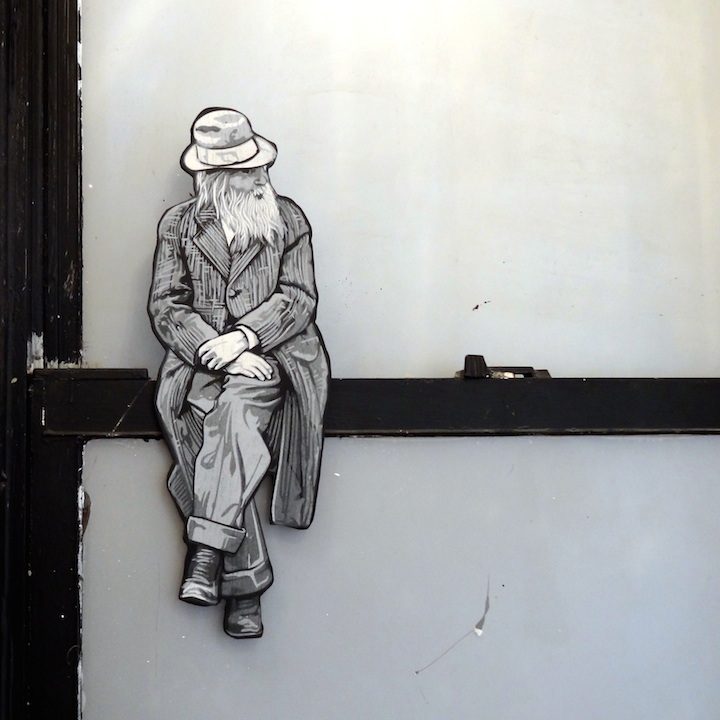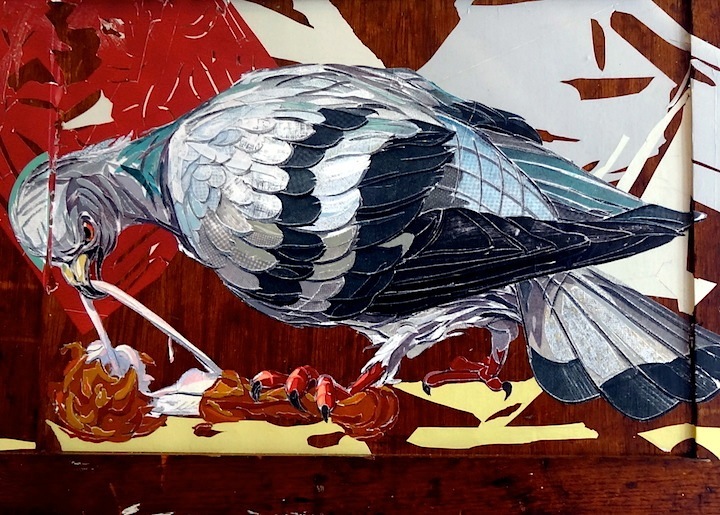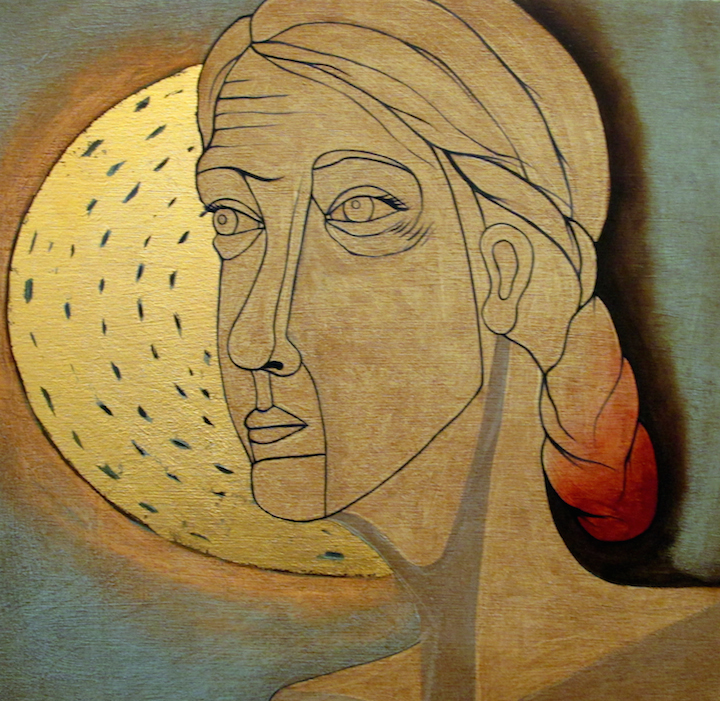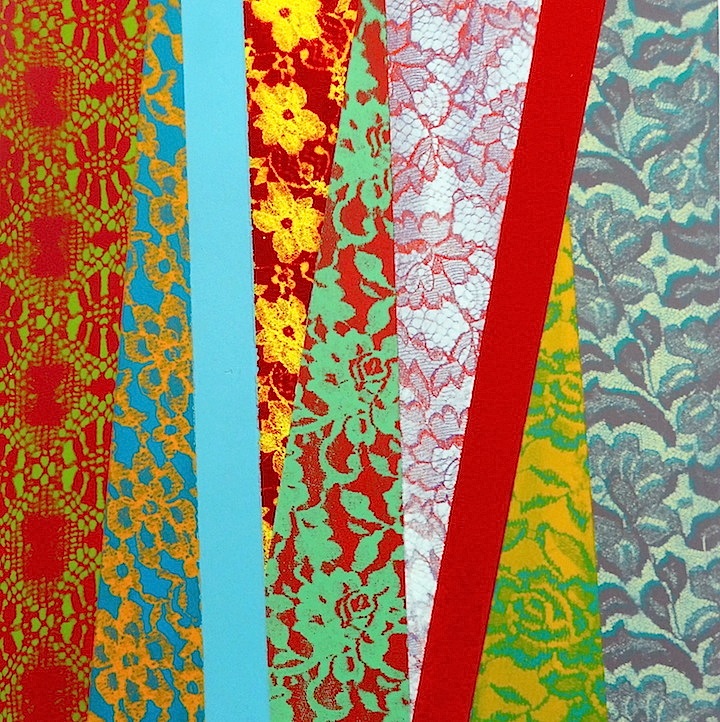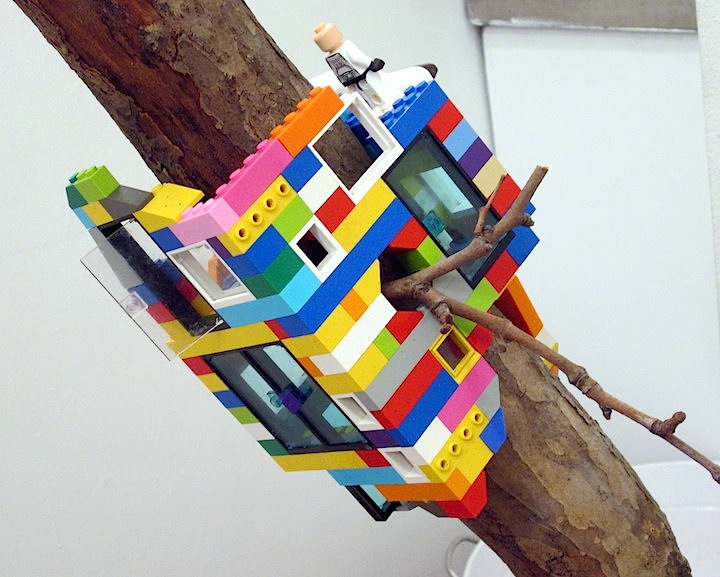Currently based in Montreal, Canada, lilyluciole has been sharing her distinct vision and luscious aesthetic throughout the globe. We met up when she was in New York City.
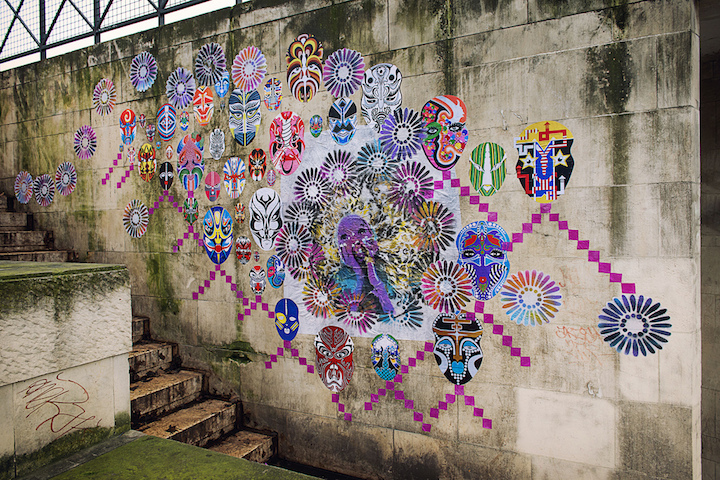
When did you first begin to share your artwork in public spaces?
I began three years ago. I was living in Paris at the time and recovering from a painful operation. Creating art was a way for me to express my feelings and, at the same time, heal my psychic and physical wounds.
What inspired you to hit the streets?
I wanted to share my vision with others, while transforming public space in a positive way. I feel that I have a unique way of seeing the world. The first image that I pasted after I arrived Montreal in 2011 was a portrait of an African woman who represented survival amidst difficulties. She was a woman who remained faithful to her dreams despite adversity.
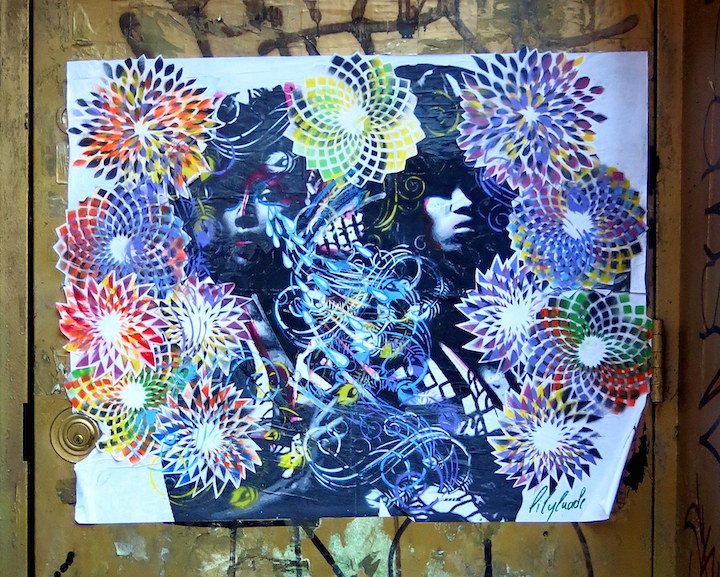
Which cities have you hit since?
I’ve gotten my artwork up in Montreal, Paris, Berlin and New York City. And Eric Marechal has pasted for me in China, Brazil, Argentina and Mexico for Street Art without Borders and the ArtFabric. I was also involved in JR’s Inside Out Project in Sao Paulo, thanks to Eric and Fabi Futata.
What is the riskiest thing you ever did in the public art sphere?
I never think about it, so there are no risks. What I’m doing is too important. Any “risks” that I take only enhance my viewpoint.
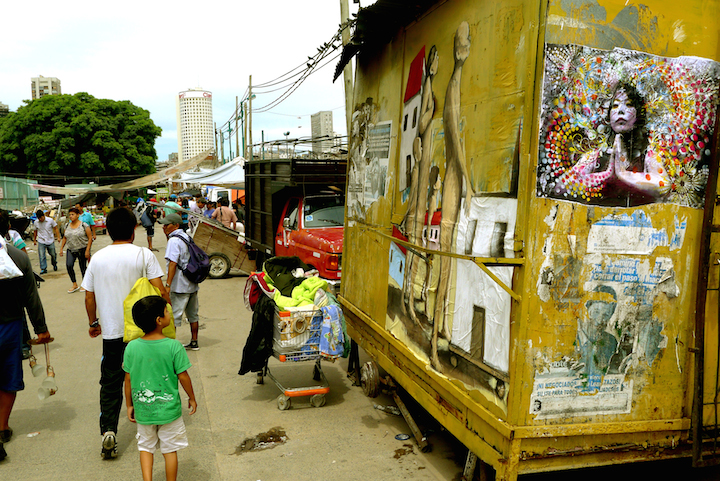
Do you belong to any crews?
I belong to Collective Offmurales, a Montreal-based collective made up largely of women. It includes a range of artists from yarn bombers to street artists –like Zola, Stela, Wall of Femmes, Camille Larrivée and Harpy. I also work independently of this crew on an informal basis with a gamut of artists including street artists, photographers and dancers.
Have you any favorite artists? Artists who’ve inspired you?
I’ve been in love with Swoon since I first discovered her. But there are many others I really appreciate. I have a great respect for artists who are passionate, who seek their own truth, who view the world critically and who connect to others’ realities – those whose lives and art are one.
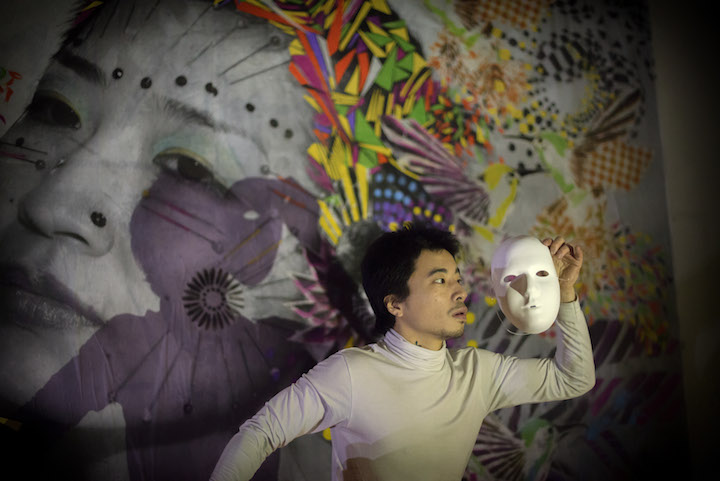
Have any particular cultures influenced you?
Not consciously. But I suppose I’ve been influenced by African and European ones. My inspiration is rooted in my travels, in dance and in life, itself.
Are you generally satisfied with your finished piece?
Sometimes. But as soon as I’m finished creating one, I’m already thinking about the next one.
Do you have a formal art education? Was it worthwhile?
I began studying for a BFA in 2002, and I completed it in 2008. Yes, I’d say it was worthwhile, as it helped open me to many things, including the interdisciplinary fusion of techniques and genres, such as photography, fine arts and video.
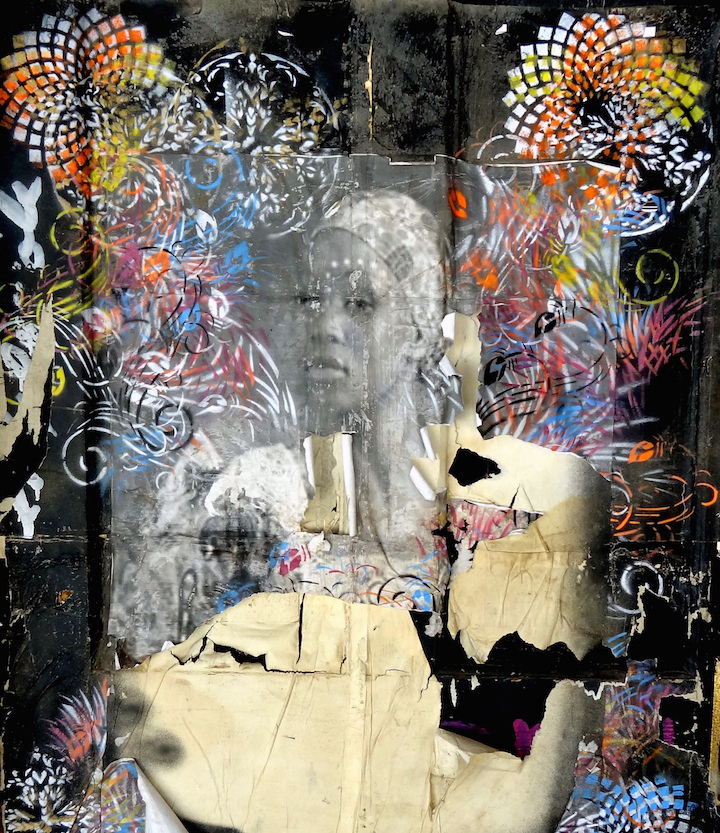
Have you shown your work in galleries?
Yes, mainly in Paris, because in Montreal galleries tend to focus on a select group of artists.
Any thoughts about the graffiti/street art divide?
I don’t understand it. I want to bridge the so-called divide.
How has your work evolved in the past few years?
It’s gotten lighter in tone.
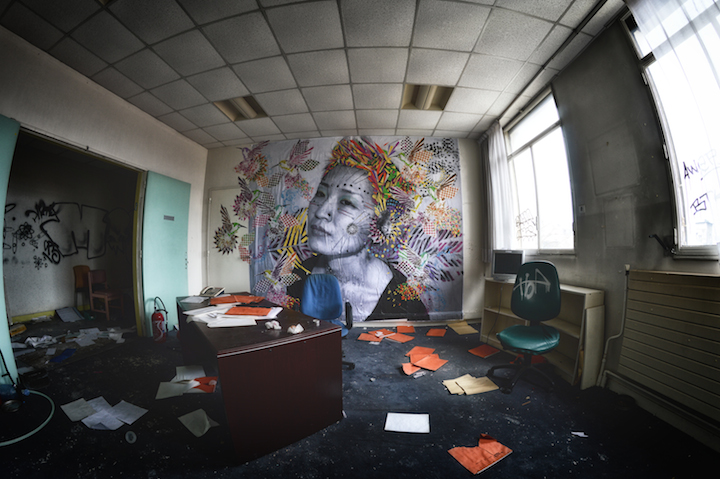
How does the street art scene in Montreal differ from the one here in NYC?
The street art scene in Montreal is new compared to the one here in NYC. It is still emerging, and it does not yet have the energy of NYC, Paris or Berlin. It has yet to open itself to the world. But it will.
How do you feel about the role of the Internet in all this?
The streets are what matter in this movement. But I’m not against the Internet as a tool to promote what’s on the streets. And I am grateful to all the photographers who document and share my work — the artfabric, Sylvain Borsatti, Alex Tassot, Street Art Shooteurs and everyone else who has captured my work.
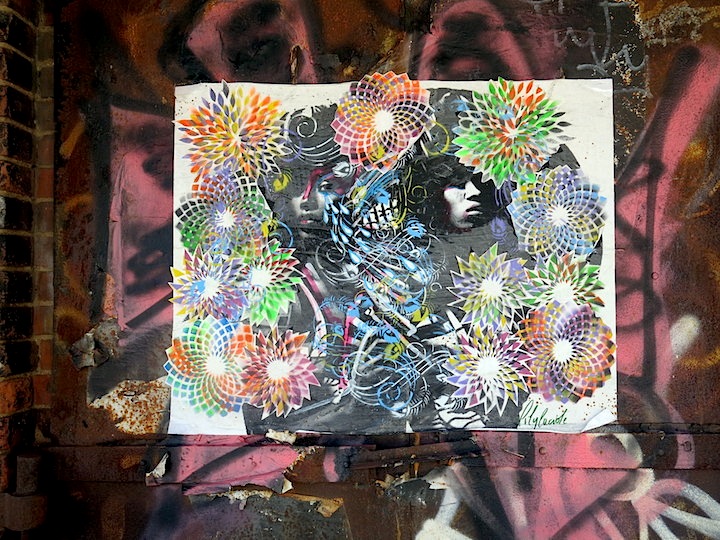
Have you any feelings about the bloggers in the scene?
I’d like to see more discussion beyond a superficial level. Bloggers need to question the artists and listen to them.
What do you see as the role of the artist in society?
To provide society with an alternate voice, an individual one. I see my particular role as blurring the boundaries among cultures.
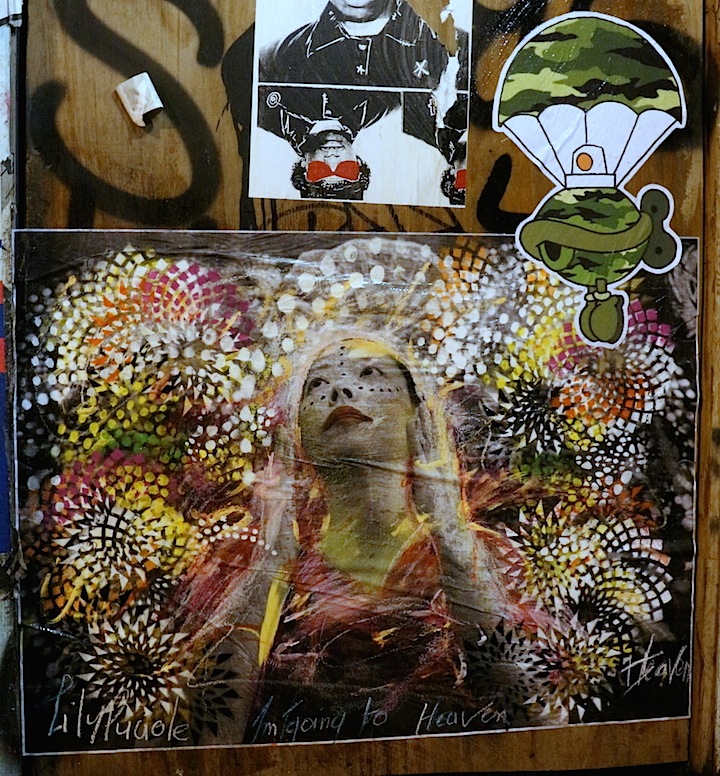
What do you see as the future of street art?
It will become bigger and bigger and more socially conscious at the same time.
What about you? What’s ahead for you?
I don’t know, but I will continue to explore my identity, my sense of truth and my position as a woman and as an artist. Women have a particular wisdom and perception of the world that come from their intuition. I hope to continue to broaden my distinct insights and express them through my art.
Interview conducted and edited by Lois Stavsky. Photos: 1. lilyluciole & Baubô in Paris by Alex Tassot; 2. lilyluciole in NYC by Lois Stavsky; 3. lilyluciole & Herard for ArtFabric in Buenos Aires with photography & Choice of collaboration by Fabi & Eric Marechal; 4. lilyluciole & Ismaera in Paris by Alex Tassot; 5. lilyluciole in NYC by Sara Mozeson; 6. lilyluciole in abandoned space by Street Art Shooteurs; 7. ilyluciole in NYC by Lois Stavsky and 8. lilyluciole and Keith QbNyc in NYC by Rachel Fawn Alban
